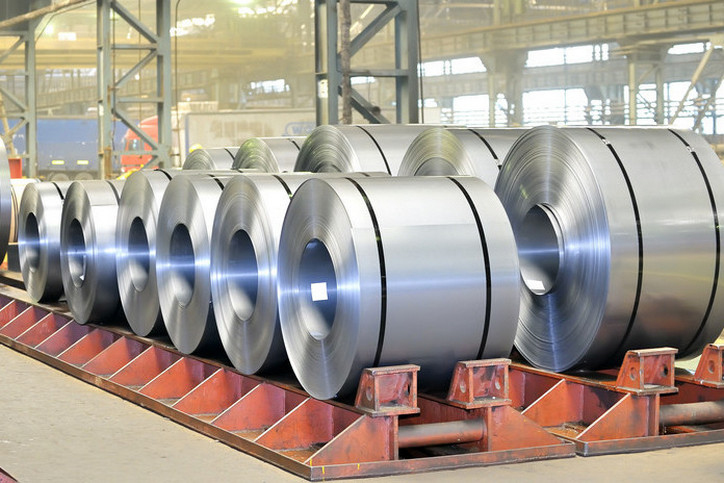By Jeff Ferry, CPA Research Director
The pundits who declare ominously that we are on the brink of a trade war have it wrong. In fact, we are in the midst of a war for domination of the world steel market. And as a quick look at the numbers makes clear, so far we are losing.
The World Steel Organization does a great job of assembling data for the worldwide steel industry. A quick look at recent steel history makes it clear to what extent China is dominating the industry and creating problems for other producers.
The core problem for the steel industry is overproduction: the world is producing about 1,600 million tons of steel a year and only consumes about 1,100. As Figure 1 shows, the overproduction problem is entirely due to China’s huge increase in production. China’s 2016 steel production of 808 million tons is up 65% on its 2007 total. In fact, the Chinese government officially and publicly recognized that it was overproducing back in 2007, and has called on its own industry to begin cutting back production and retiring steel plants, especially the older, heavily polluting ones. Despite the fact that the Chinese government and related agencies support the industry with billions of dollars in subsidies, the Chinese industry did not heed the call. Instead, production continued to rise. Today, China produces more steel than the next nine steel-producing nations combined.

Figure 1: China now accounts for 50% of world steel production.
As Figure 2 shows, many of the other top ten steel producers have reacted to the oversupply of steel by reducing production. Only India shows a large increase in recent years, and India consumes virtually all of its steel internally. The US has cut production by 20%, the largest production cut in this group (other than the Ukraine, which suffered invasion by Russia during the period). South Korea has raised production by 33% in the period, reflecting an economic strategy (neo-mercantilism) that is in some ways similar to that of China.

Figure 2: The rest of the top ten steel producers have mostly held production flat in this
era of oversupply. US production fell by 20%.
Figure 3 looks at the top countries in terms of net exports and net imports in 2016. Net exports is the total of exports minus the total of imports in that year. Because steel is so critical to so many other industries, most advanced nations want to ensure that their net imports do not get very high, so they always have the capability to meet their own needs, even in times of crisis. Some nations, especially the neo-mercantilists, want to build up large export businesses in steel. As Figure 3 shows, Japan, Russia, and the Ukraine all export more steel as a share of their domestic production than China. However all these countries have responded to the overproduction crisis (and the weak steel prices) by cutting back production in these years. Japan’s 2016 production was 13% below its 2007 level. China’s net exports of 94.5 million tons are more than the other four major net exporters combined. And China has not cut back production. On the contrary, China’s steel production has increased, and with a slump in its previously-booming construction industry, there is nowhere for the excess production to go but into the export market.
Meanwhile, on the import side, there is only one advanced nation willing to accept a large volume of steel imports—the United States. The net importers just below the US on this list have little or no steel industries of their own and must import to meet the needs of their domestic industries. Vietnam has ambitious plans to build up its own steel industry, which is likely to remove it from the list of large steel importers. The major steel producers within the European Union—Germany, France, and Italy—all manage their markets carefully to keep net imports at very low levels.
Size and success in the steel industry has little to do with comparative advantage, to use the concept often invoked by “free trade” economists with near-religious fervor. The main raw materials used to make steel are iron ore, coking coal, and scrap metal. China has no natural comparative advantage in any of these and must import them all. Labor costs are small in steel: 1 to 2 man-hours per ton—no more than 10% of the cost of a ton of steel. The “advantage” China has is a government willing to spend billions to support the growth of its steel industry. The disadvantage the US has is a government that takes a short-term view and seeks the cheapest price today and encourages its domestic industries to do the same, without regard for the long-term consequences of allowing its military and civilian economies to become dependent on foreign suppliers who cannot be counted on for either price or availability in the longer term.

Figure 3: China leads the net exporters and the US the net importers.
Source: Data from World Steel Organization. Calculations by CPA.













